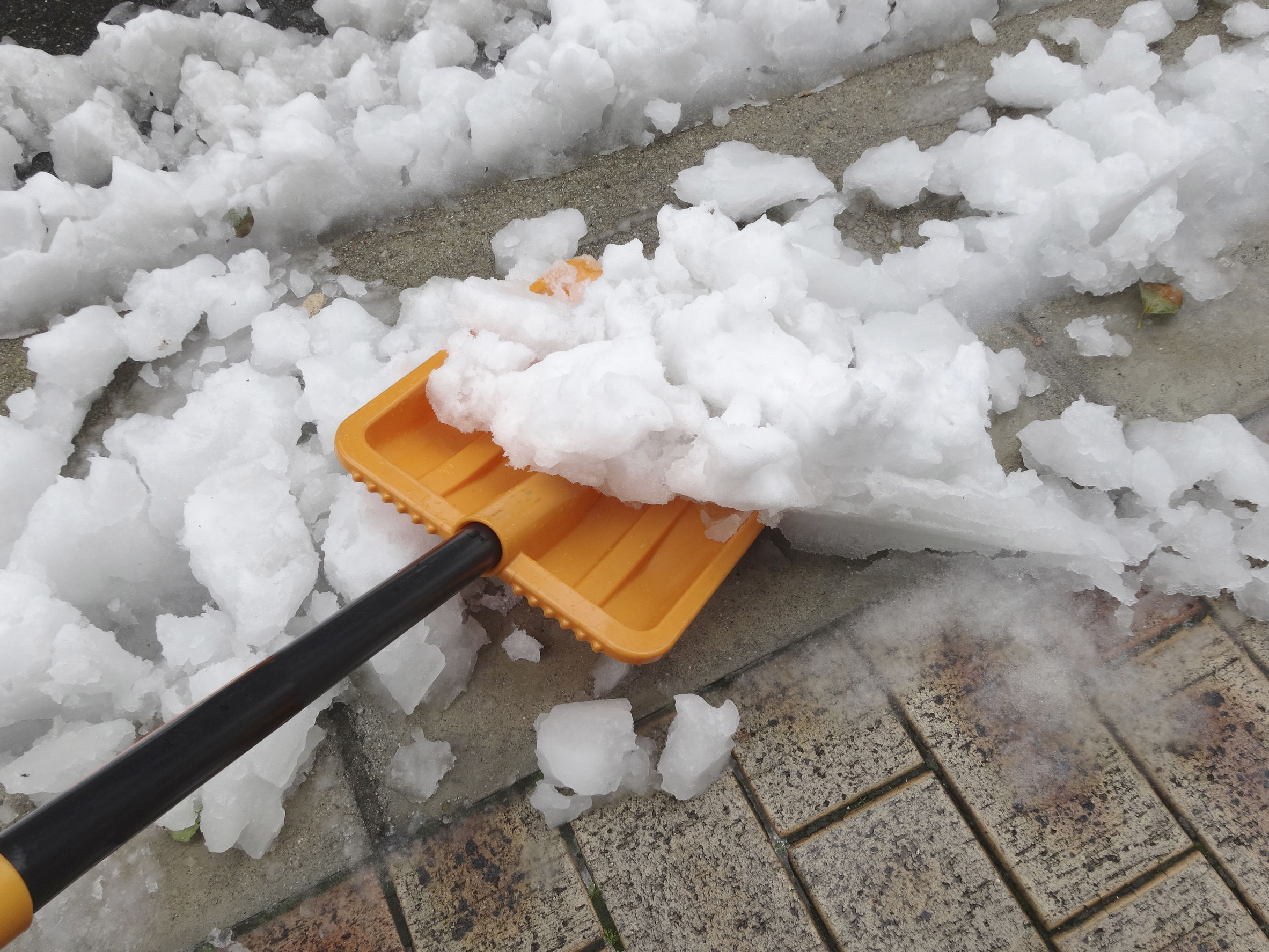

A fresh new snowfall may be welcomed by children, but it poses certain risks for New Brunswick workers.
Workers who don’t take precautions before shovelling snow can experience cold exposure, fatigue, muscle strains, back injuries and heart attacks. 
Consider this before you start: A shovel full of snow weighs about five kilograms. If you move a shovel load every five seconds, you move 70 kg in one minute. Repeat for 15 minutes and you have shovelled 1,000 kg of snow.
“It is hard on the heart and back for those who are not used to it, or for those who have a history of back or heart problems,” said Richard Blais, WorkSafeNB’s Vice-President of Prevention.
“Taking the right precautions can be lifesaving.”
Think of your heart
Shovelling snow in extreme cold increases your risk of heart attack. According to the Heart and Stroke Foundation, mortality rates are 10% higher during winter than in warmer months. The risk is even greater if you’re inactive or living with heart disease.
“Shovelling heavy, wet snow raises the heart rate quickly,” Blais said. “Add to the mix cold temperatures, which raise blood pressure and the likelihood of developing blood clots and it can be deadly.”
Be prepared
Wear appropriate clothing and personal protective equipment. Do some warm-ups before you start shovelling to loosen up your muscles and joints.
Choose a proper shovel
A snow shovel should be lightweight, about 1.5 kg or a little over three pounds. The blade shouldn’t be too large – otherwise your load will be too heavy. Look for one with a long handle so you don’t have to stoop over to shovel, and a grip made of plastic or wood.
Shovel properly
Shovel at a steady pace. Don’t rush it, take frequent short breaks and sip water to stay hydrated. As much as possible, push the snow rather than lift it.
“If you must throw it, take smaller shovel loads and turn your feet to the direction you are throwing,” Blais said. “Twisting at the waist or throwing the snow over your shoulder could lead to serious injuries.”
Slips, trips and falls
Snow and cold weather also present a bigger risk for slips, trips and falls – one of the leading causes of workplace injuries.
“Every winter, we have workers injured from slips and falls because of snowy and icy conditions or melted snow indoors,” Blais said.
Good housekeeping practices can reduce the risks. Clear and sand driveways, stairs and walkways, and mop up any spills or melted snow indoors.
For those who spend a lot of time working outdoors, proper footwear with winter treads and insulation is essential.
Resources:
Hazard Alert – Surviving the Cold
WorkSafeNB’s Guide to OHS Legislation – Heat and Stress Cold
WorkSafeNB’s Warm-up and Stretch pocket card
OHS Answers Fact Sheet – Shovelling Snow
OHS Answers Fact Sheet – Shovelling